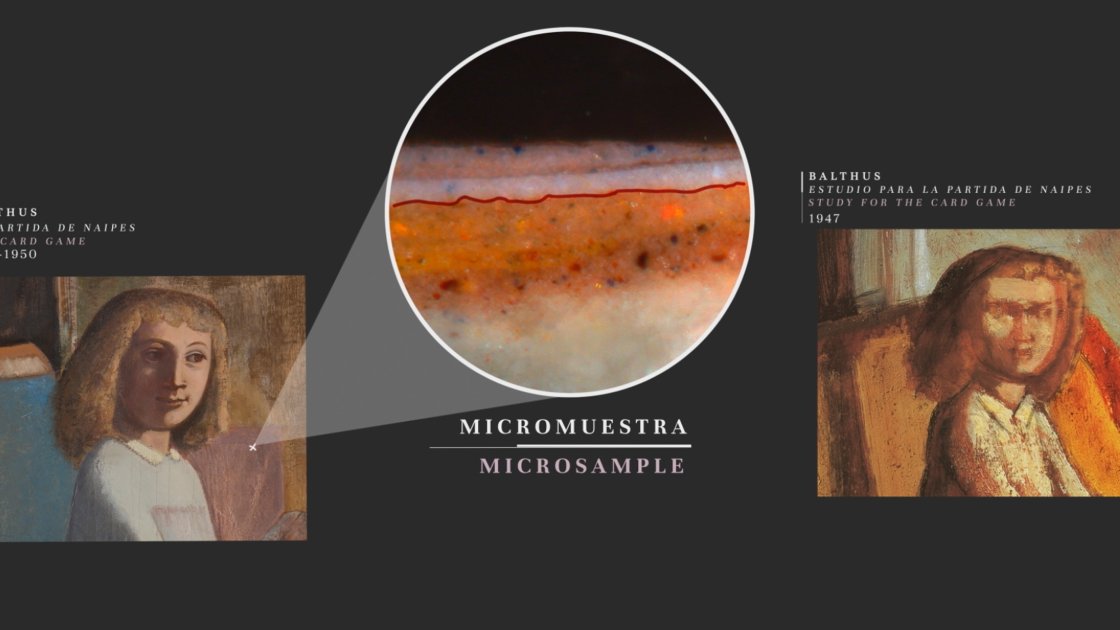Technical study
Balthus's The Card Game, which was painted in 1948-1950, is the result of a complex process of production culminating in a work of apparent simplicity.
The study technique used revealed a previous version beneath the painting that can be linked to Study for The Card Game of 1947.The materials and procedures discovered revealed that Balthus used various pictorial techniques to cover the underlying painting and produce the final result.
The study methods described have made it possible to identify the many layers of paint and their unequal distribution throughout the work; both findings support the idea that the artist worked on this painting in several stages. The most likely hypothesis is that after beginning it in 1948, taking as a basis an earlier sketch on the same subject, he left it rolled up in his studio for a time. Balthus subsequently went back to it and made some of the most significant changes, especially to the figures’ faces and hands.
Study of the painting technique
The technique Balthus used to paint the picture was a complex one. Raking light macro photography revealed the thick textures of the surface as well as cracks in the painting He primed the painting with strokes of thick impasto to produce a rough, matte effect reminiscent of mural painting.
The raking light illumination is a technique that put in evidence the characteristic of the painting superficie and some of the alterations. Raking light macro photography revealed the thick textures of the surface as well as cracks in the painting.
The technical study enabled us to ascertain the most likely reason for the cracks. Two hipotesis have been proposed about the reasons that could have created the cracks. The first one would be due to the filler materials and binder present in the preparation layer and the painting. The second reason is that Balthus started work on the painting in 1948, rolled the canvas up, and finished it in different stages. Rolling the canvas up would have caused the surface layers to split and form vertical cracks.



The hidden figure
The microsample taken from the boy's shirt made it possible to match the green layer(A) with a blouse painted at an early stage that is similar to the blouse one worn by the same figure, then female, in the 1947 sketch. In the final version, Balthus decided to paint over the garment blouse with a layer of red (B).
Secrets of painting
Radiography has made it possible to see the changes Balthus made during the painting process. Two compositions were revealed, the final one and an underlying one very similar to the 1947 sketch.
The radiographic image revealed two objects hidden beneath the blue chair: the sofa with its round forms, which was simplified in the final version, and a hat with a bow, which Balthus decided not to include in the picture.









